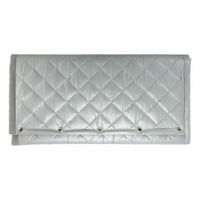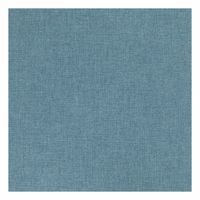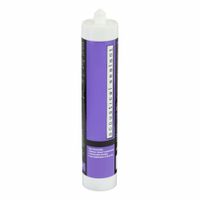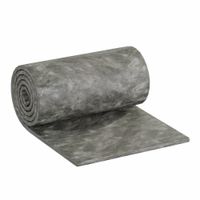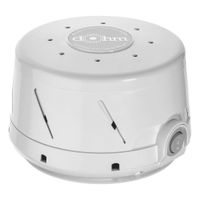Call +(254) 703 030 000 / 751 483 999 / 721 704 777
- Home
- Furnishings Appliances Hospitality
- Furnishings Building Supplies
- Noise Control Products
Frequently Asked Questions
What are the best noise control products for reducing equipment volume?
The best noise control products for reducing equipment volume include:
1. **Acoustic Enclosures**: These are custom-built structures that encase noisy equipment, significantly reducing sound transmission. They are ideal for industrial machinery and can be tailored to specific noise reduction requirements.
2. **Soundproof Curtains**: Made from heavy-duty materials, these curtains can be hung around equipment to absorb and block sound. They are flexible, easy to install, and can be moved as needed, making them suitable for temporary or changing setups.
3. **Acoustic Panels**: These panels are designed to absorb sound waves and reduce echo. They can be mounted on walls or ceilings near noisy equipment to minimize sound reflection and improve overall acoustics.
4. **Vibration Isolation Pads**: These are used to reduce noise generated by vibrations from equipment. By placing these pads under machinery, vibrations are absorbed, preventing them from transferring to floors and walls, which reduces noise.
5. **Silencers and Mufflers**: These devices are attached to equipment exhausts to reduce noise from air or gas flow. They are commonly used in HVAC systems, engines, and compressors.
6. **Acoustic Barriers**: These are solid structures placed between the noise source and the receiver. They block direct sound paths and are effective in outdoor or large indoor spaces.
7. **Damping Compounds**: Applied to surfaces of equipment, these compounds reduce noise by converting sound energy into heat. They are useful for metal surfaces that vibrate and produce noise.
8. **Acoustic Foam**: This lightweight material is used to line equipment housings or rooms to absorb sound. It is effective in reducing high-frequency noise.
Selecting the right product depends on the specific noise source, environment, and desired level of noise reduction.
How do acoustic wall blankets work to absorb sound?
Acoustic wall blankets work to absorb sound by utilizing materials that reduce sound wave reflections and reverberations within a space. These blankets are typically made from porous materials such as fiberglass, mineral wool, or foam, which have a high Noise Reduction Coefficient (NRC). The NRC is a measure of how much sound a material can absorb, with higher values indicating better absorption.
When sound waves encounter an acoustic wall blanket, they penetrate the porous surface and enter the fibrous or cellular structure of the material. As the sound waves travel through these tiny air pockets, they cause the fibers or cells to vibrate. This vibration converts the sound energy into a small amount of heat through friction and air movement, effectively dissipating the sound energy and reducing its intensity.
The effectiveness of acoustic wall blankets depends on several factors, including the thickness and density of the material, the frequency of the sound waves, and the installation method. Thicker and denser materials generally provide better absorption, especially for lower frequency sounds. Additionally, the blankets are often installed with an air gap between the blanket and the wall, which enhances their ability to absorb lower frequencies by allowing sound waves to pass through the material multiple times.
Acoustic wall blankets are commonly used in environments where sound control is crucial, such as recording studios, theaters, industrial facilities, and offices. By reducing echo and reverberation, they improve sound clarity and reduce noise pollution, creating a more acoustically pleasant environment.
What is the difference between acoustic panels and acoustic tiles?
Acoustic panels and acoustic tiles are both used to manage sound within a space, but they differ in design, application, and installation.
Acoustic panels are typically larger, standalone units designed to absorb sound waves and reduce noise. They are often made from materials like foam, fabric-wrapped fiberglass, or polyester. These panels are versatile and can be mounted on walls or ceilings. They come in various shapes, sizes, and colors, allowing for customization to match the aesthetic of a room. Acoustic panels are commonly used in recording studios, theaters, and offices to improve sound quality by minimizing echoes and reverberation.
Acoustic tiles, on the other hand, are smaller and usually part of a modular system. They are often installed in a grid pattern on ceilings, though they can also be used on walls. Made from materials like mineral fiber, fiberglass, or foam, acoustic tiles are designed to absorb sound and improve acoustics in a space. They are frequently used in commercial settings like offices, schools, and hospitals due to their ease of installation and ability to cover large areas efficiently. Acoustic tiles are typically more uniform in appearance and are often white or off-white, though some variations offer different colors and textures.
In summary, the main differences lie in their size, installation, and aesthetic flexibility. Acoustic panels offer more design options and are used for targeted sound absorption, while acoustic tiles are more uniform and are used for broader coverage in managing sound across larger spaces.
How effective are sound-absorbing duct liners in reducing noise?
Sound-absorbing duct liners are quite effective in reducing noise within HVAC systems. They work by attenuating sound waves that travel through the ductwork, thereby minimizing the transmission of noise from the system to occupied spaces. These liners are typically made from fibrous materials like fiberglass or mineral wool, which have high sound absorption coefficients.
The effectiveness of duct liners depends on several factors, including the thickness and density of the material, the frequency of the noise, and the length of the duct. Thicker and denser liners generally provide better sound absorption, particularly for low-frequency noises. The material's ability to absorb sound is often measured by the Noise Reduction Coefficient (NRC), with higher values indicating better performance.
Duct liners are most effective at reducing mid to high-frequency noise, which is common in HVAC systems due to fan and airflow turbulence. They can significantly reduce noise levels, often by several decibels, which can make a noticeable difference in the acoustic comfort of a building. However, for very low-frequency noise, additional measures such as silencers or vibration isolators may be necessary.
Installation quality also plays a crucial role in the effectiveness of duct liners. Proper installation ensures that there are no gaps or leaks that could allow sound to bypass the liner. Additionally, the liners should be installed in a way that minimizes airflow resistance to maintain system efficiency.
Overall, sound-absorbing duct liners are a cost-effective solution for noise control in HVAC systems, contributing to a quieter and more comfortable indoor environment.
Can white noise machines effectively mask unwanted sounds?
Yes, white noise machines can effectively mask unwanted sounds. White noise is a consistent sound that contains all frequencies at equal intensity, which can help to drown out or mask other disruptive noises in the environment. This masking effect works by reducing the contrast between the unwanted noise and the background sound, making it less noticeable and less likely to disturb sleep or concentration.
White noise machines are particularly useful in environments where unpredictable or intermittent noises, such as traffic, conversations, or household activities, can be disruptive. By providing a steady auditory backdrop, these machines can help individuals focus better, relax, or fall asleep more easily. The effectiveness of white noise machines can vary depending on the specific frequencies of the unwanted sounds and the individual's sensitivity to noise.
In addition to white noise, many machines offer other sound options, such as pink noise, brown noise, or nature sounds, which some people find more soothing or effective for masking specific types of noise. The choice of sound can be a matter of personal preference and may depend on the particular environment and the nature of the unwanted sounds.
Overall, while white noise machines are not a perfect solution for all noise-related issues, they can be a valuable tool for improving sleep quality, concentration, and relaxation by effectively masking unwanted sounds.
What are the installation requirements for acoustic ceiling tiles?
To install acoustic ceiling tiles, the following requirements should be considered:
1. **Tools and Materials**:
- Acoustic ceiling tiles
- Suspension grid system (main runners, cross tees, wall angles)
- Wire hangers or fasteners
- Cutting tools (utility knife, saw)
- Measuring tape
- Level
- Chalk line
- Safety gear (gloves, goggles)
2. **Ceiling Height and Space**:
- Ensure adequate space above the ceiling for installation and maintenance.
- Minimum clearance from the existing ceiling should be around 3-4 inches.
3. **Structural Support**:
- The existing ceiling or structure must be capable of supporting the weight of the tiles and grid system.
- Use appropriate anchors and fasteners for the type of ceiling (concrete, wood, etc.).
4. **Environmental Conditions**:
- Install in a dry environment to prevent moisture damage.
- Maintain room temperature and humidity as per the tile manufacturer's specifications.
5. **Grid System Installation**:
- Install the wall angles around the perimeter of the room.
- Use a level to ensure the grid system is even.
- Main runners should be installed parallel to the longest wall, spaced according to tile size.
6. **Tile Installation**:
- Cut tiles to fit around fixtures and edges.
- Place tiles into the grid system, ensuring they are level and secure.
7. **Safety and Compliance**:
- Follow local building codes and regulations.
- Ensure proper fire rating and acoustic performance as required.
8. **Inspection and Maintenance**:
- Inspect for alignment and stability.
- Plan for easy access to utilities above the ceiling for future maintenance.
How do I choose the right noise control product for my environment?
To choose the right noise control product for your environment, follow these steps:
1. **Identify the Noise Source**: Determine whether the noise is airborne (e.g., voices, music) or structure-borne (e.g., machinery vibrations). This will guide the type of product needed.
2. **Assess the Environment**: Consider the size, shape, and materials of the space. Different environments (e.g., offices, factories, homes) require different solutions.
3. **Determine the Noise Level**: Measure the decibel level using a sound level meter. This helps in selecting a product that can effectively reduce noise to acceptable levels.
4. **Set Noise Reduction Goals**: Define the desired noise reduction level. This could be based on comfort, legal requirements, or industry standards.
5. **Consider Aesthetic and Functional Needs**: Choose products that blend with the environment’s aesthetics and do not hinder functionality. For example, acoustic panels come in various designs and colors.
6. **Evaluate Installation and Maintenance**: Consider the ease of installation and maintenance. Some products may require professional installation, while others are DIY-friendly.
7. **Budget Constraints**: Determine your budget. Noise control products vary widely in cost, so balance effectiveness with affordability.
8. **Research Product Options**: Look into various products like acoustic panels, soundproofing curtains, barriers, and vibration isolators. Each has specific applications and effectiveness.
9. **Consult Experts**: If unsure, consult with an acoustical engineer or noise control specialist. They can provide tailored solutions based on a detailed analysis.
10. **Test and Adjust**: After installation, test the effectiveness of the product. Be prepared to make adjustments or add additional products if necessary.
By systematically evaluating these factors, you can select the most appropriate noise control product for your specific environment.
